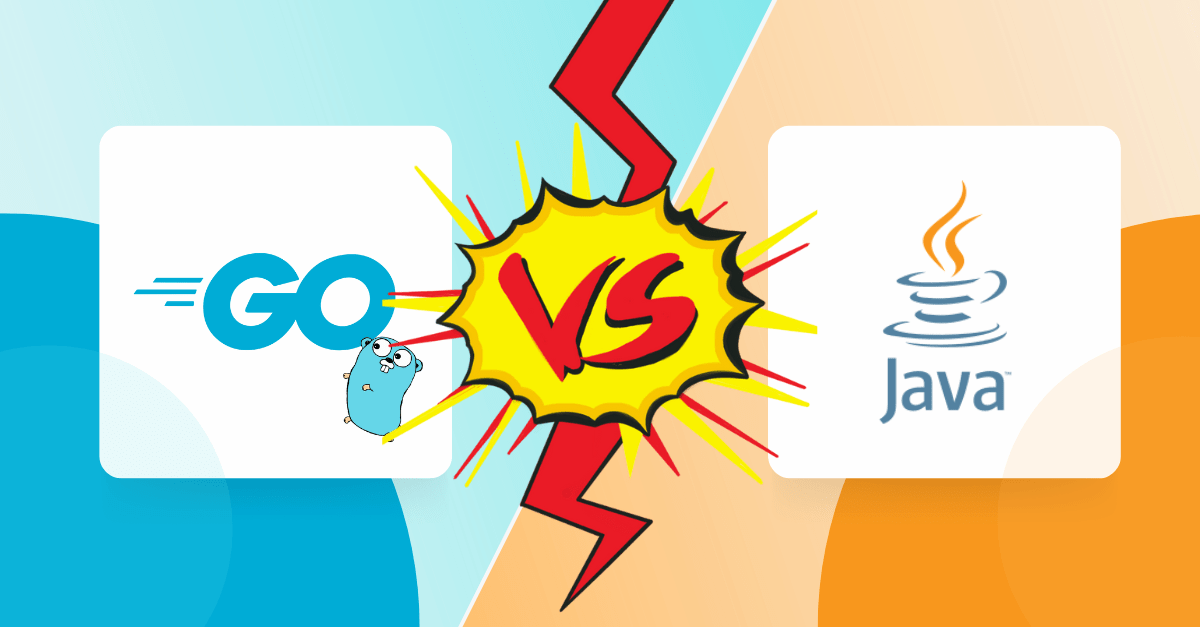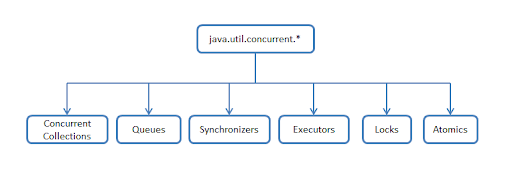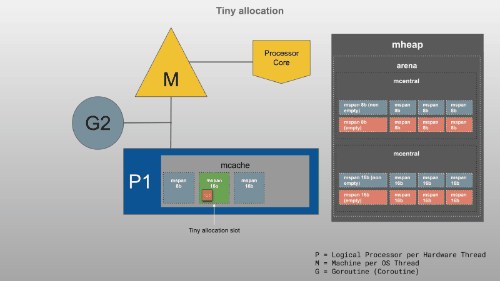Comparison between Golang and Java - Backend Battle of 2022

Is Java a better server side language than Golang? I can already see some angry Golang programmers faces! Well, this is a tough question to answer as there are various parameters based on which the final verdict has to be given. Nevertheless, we will try to provide a simplified answer in this blog, so that even the beginners get to understand what they should start with. So, let us get started.
1. Simplicity
- When it comes to server-side programming, simplicity is of the utmost essence. This is because over the course of time, a project is bound to face scalability and legacy issues. The more intricate the code is or the features are, the general scenario will be that people/developers will face issues comprehending the code.
- There are chances that developers might make uninformed decisions. So, in this regard Golang is slightly ahead of Java as it has few keywords and is semantically similar to C. Thus, the syntax is simpler when compared to Java.
- Most developers feel that threading is easier with Golang rather than Java. Although Java has annotation strategy, dependency injection, and useful features, it just adds to the complexity.
- Having said that, the maturity of Golang is still less than Java. The Go language might not be able to provide you with all the feature requests that you need. For instance, the number of packages and libraries is quite less than that of Java.
If you go by the graph, you can see that most developers still rely on Java. However, the sorry state of Golang is about to change with more upgrades in the future.

2. Types
- Golang is a statically typed and AOT compiled language. This means that the programming language is quite fast. It is open-source and cross-platform as well. Thus, you can get access to Golang and all the features for free. And you can type a code in Windows and run it on Linux or macOS.
(Side Note: Golang claims to be cross-platform. However, the machine has to create a binary file every time you try to compile the code for a specific platform)
- Developers will also dig the automated garbage collection feature of Golang. The designers of Golang decided to make the lives of the developers easier by adding the Tricolor Mark and Sweep algorithm. It works concurrently and in conjunction with the write barrier.
- Java is another statically typed, open-source language. And it exhibits the properties of both interpreted and compiled language at the same time. In addition to garbage collection, it also offers cross-platform facilities. You can run the code anywhere if you set up the Java Virtual Machine.
- As per the Golang programmers, if you compare the two languages, then you will see that Golang is faster than Java. Golang does not rely on virtual machines to compile the code. Instead, the code gets compiled into binary files directly.
3. Exceptions (Java) vs Errors and Panics (Go)
- There exists a mechanism in Golang and it exists in the form of errors and panics. In Golang, the error code is utilized to denote an abnormal state. In Go, errors are merely lightweight data objects that implement the Error interface.
- Predefined mistakes enhance signaling and enable us to identify the specific error that happened. One can wrap mistakes to provide sufficient context for function call tracing (similar to a stack trace)
- So error handling in Golang is extremely straightforward. All you need is if statements to determine if there is any error, and you can pass the error as the final value and decide what to do with it.
- Exception handling is a major component of Java, and it is used to take care of runtime errors like IOException, SQLException, ClassNotFoundException, etc. Unchecked exceptions are a nuisance and fatal in Java. But checked exceptions can be managed properly.
- In most cases of production in Java, crashes and errors are the result of exceptions. The exceptions are a bit clunky and most developers resent it.
4. Concurrency
- Simply put, concurrency is the ability to execute various functions independent of each other.Concurrency is one of the most interesting features of Golang along with parallelism.
- Golang takes advantage of OS threads with the help of goroutines. On the other hand, Java takes advantage of OS threads to carry out parallel execution of operations through green threads.
- Goroutines are usually lightweight threads and they interact with each other through the medium of channels. Furthermore, with Golang, it is possible to achieve multi-threaded parallelization and concurrency.
- On the contrary, Java handles multithreading through the Thread class. Moreover, with the arrival of version 5.0, Java also supports concurrency APIs of high level.
- According to the developers, the concurrency in Golang is superior to the concurrency in Java. In Java, concurrency occurs among autonomous threads, which can only speak to one another through return values or shared (volatile) variables and are highly costly to build and manage.
- In the case of Golang,the approach is somewhat different. It actually implements the principle of sharing memory through communication. A Go subprocess (goroutine) has the ability to write into an unbuffered channel and wait until another goroutine has picked up the written data, or it can fill its buffer when the channel is buffered.
- Last but not least, the goroutines in Golang are easier to create.
The picture below shows the concurrency in Java.

5. Microservices
- Most companies have clients who want to work with microservices due to the plethora of benefits it has to offer. Such an architecture necessitates segmenting the program into services that interact with one another using an API interface. The development process is more adaptable in this approach.
- When using the microservices strategy, you may change only one service as opposed to the entire app. As a result, there is a lesser chance of error and a quicker implementation.
- By segmenting the structure, it is simpler to go to the root of a possible issue. And given its smaller memory footprint and quicker start up, Go is ideal for that.
- However, for intricate systems, it is advisable to stick to Java especially with single server requirements. This is simply due to the fact that Java had the opportunity to evolve and address the issues over such a long period of time.
6. Features (Flexibility and Libraries)
- Java is an object-oriented language whereas Golang is not. You can use inheritance and reflection in Java. But you cannot do that in Golang. Codes in Java can do self-reflection during runtime as a way to check for errors.
- Golang has no concept of class. Instead, developers can take advantage of struct embedding. Well, you cannot extend the struct, but rather use the struct to form other objects (this is known as composition)
- Well, some may argue that Java outdoes Golang in terms of libraries and packages. But don’t let that fool you. Golang’s standard library is quite powerful and modern. You get access to JSON support, http support, html templates, etc. However, in the case of Java, developers often have to rely on 3rd party libraries.
- Even if you get access to built-in libraries in Java, there is a whole lot of boilerplate involved even with the updated versions of Java.
7. Memory Management
- Golang has built-in memory management of its own. And it enhances the speed of the programming language as well. The automated garbage collection features does not create a delay when it comes to dealing with extraneous references of the objects.
- Although Java makes life easier for developers as they do not have to implement memory management logic into their program, the garbage collector is quite weak(when compared to Golang). And the JVM actually performs the automated garbage collection.
The picture below shows how the memory is allocated in Golang.

8. Community
- Java first appeared in 1995, while Golang appeared in 2009. As you can imagine, Java has a larger community when compared to Golang.
- However, even if the community is small in the case of Golang, the developers are quite passionate and lend their helping hands to others.
Meanwhile, if you are unable to work on a difficult Golang project, then there is no shame in taking the help of a Golang programmer. He or she will guide you how to create the most efficient and precise code to execute the program.
9. Career
- Now, this is an important aspect, and we have kept that as the final parameter. If we look at the IT sector, we will see that most of the companies have invested a lot of money in Java. Thus, the demand for Java developers is high even today.
- In comparison, Golang developers are practically non-existent. But it is a promising language, having a lot of potential and is bound to gain wider recognition in the coming years. Furthermore, it has proven to be a wonderful language for blockchain development so as to circumvent known language architecture.
- As per the report of Glassdoor, the average salary of a Java developer in the US is around $93,118. And if you are an experienced campaigner, then you can earn around $180000.
- On the other hand, the average salary of a Golang developer in the US is around $1,35,000 annually. So, you can see that the salary of Golang developers is higher than that of Java developers.
- When it comes to developing web applications or mobile apps, Golangs reigns supreme in comparison to Java. Although Golang is used less for such applications, the trend is changing with Java being replaced by Kotlin in the Android section. Hopefully, you have understood the differences between Golang and Java. It is upto you to decide which language you will require the most.